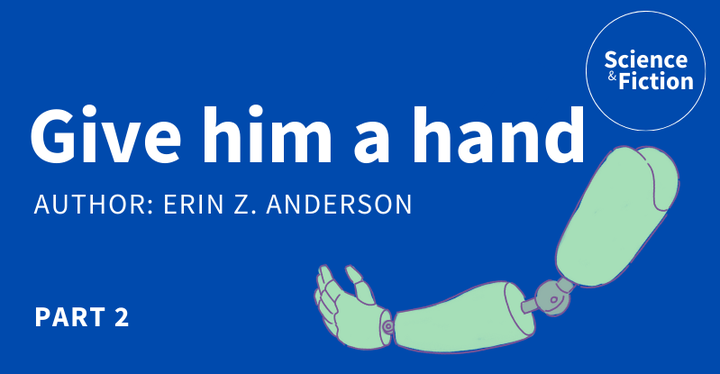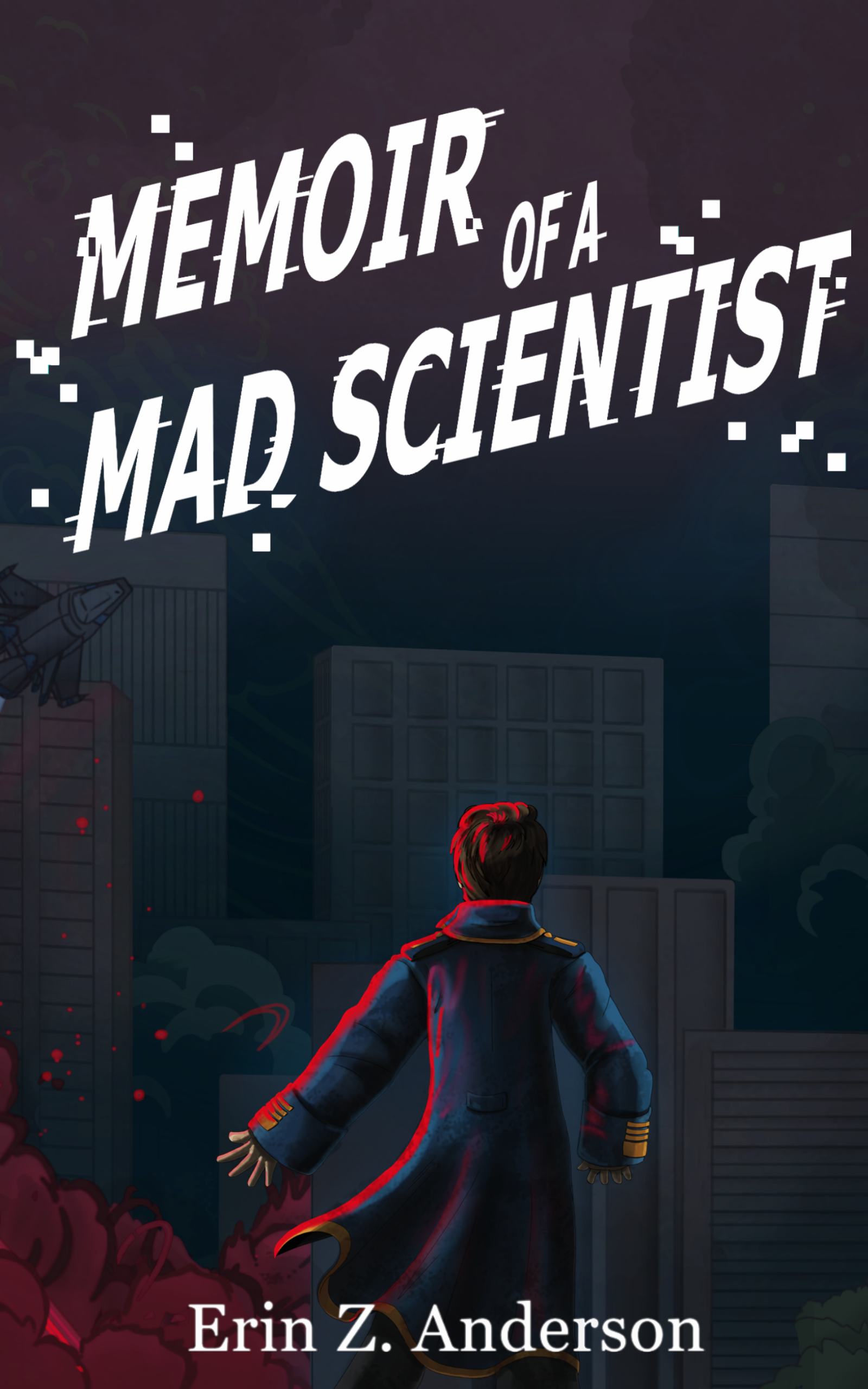
A cyborg adjusts to his new prosthetics with the help of the scientist who designed them.
Content warnings
Prosthetics
The short story
Milosh sat still while I fussed over the attachment, locking down the connection snaps and checking over the joint for gaps. I was still working when the big nurse took the opportunity to bring out the charging cable. At his approach, Milosh shrank back a little, but the nurse took it in stride, clasping a firm hand on his other shoulder to plug the cable into the slot at his collar.
“You’ll need to plug in at least once a day,” Kazimir explained as the nurse and I fixed the other arm in place. “Most people like to charge them at night. That way, you can leave it in while you sleep and be ready to go by morning.”
“Uh-huh.” Milosh nodded dumbly, his eyes glued to the synthetic hands folded in his lap. He looked so lost, his organic body bent as he hunched what was left of his shoulders close, the base of the cord jutting out of his neck like a knife.
“Go on,” I coached him. “Give them a go.”
Blinking rapidly, Milosh screwed up his bare brows and concentrated on his left hand. For a second, he doubted himself, and it looked like the interface might not work. Then, the fingers on the prosthetic twitched.
“Alright!” I applauded.
“Try to move your whole arm,” Kazimir suggested, and I noticed that she was smiling, too.
Mutely, Milosh obeyed, cautiously lifting the hand from his lap to raise his arm up and out, reaching into the air to the sound of whirring machinery.
“Take it slow; you don’t want to smack yourself by accident,” guided Kazimir. Leaning close, she used her own hands to escort him through the motion.
“Sure,” Milosh responded automatically. I doubted he had heard her as his entire being focused on the rotating wrist in front of his face.
“It’ll take some practice,” Kazimir explained as we watched him lift the other arm with equal care, bending the elbow and clenching the fingers into fists. “But given time, you should be able to do most things as easily as you used to. More, if Dr. Voss is as good as he says he is.”
“My team and I are working on it,” I assured Kazimir.
“We have a cybernetics therapist on staff,” continued the doctor conversationally. “You can work with her to start getting a better handle on how to use them.”
I don’t know why she bothered talking; Milosh wasn’t listening. He had turned away from the doctor to fumble with one of the pillows on his bed. Holding out his arms like the two halves of a set of tongs, Milosh pinched the pillow between his flat hands. His naked brows frowned as the pillow flopped out of his grip.
“Try again. Come on,” Kazimir prompted. For a second, I thought Milosh might snap at her, but he bit his lip and bent to try again. His fingers jumped spastically as he struggled to form fists around the soft cloth. Eyes blinking fast, lip pressed between his teeth in concentration, Milosh scowled at the pillow while his artificial hands came together around the cushion.
Never had moving a pillow been met with such applause.
Even in the face of success, Milosh looked at the pillow pinched between his outstretched fists as though it were his greatest failure.
“You got it!” Kazimir gave him a gentle pat on the back. “We can work with this.”
“It’s a pillow,” he grumbled, his voice thick with frustration.
“And you picked it up,” Kazimir told him.
“It might take a while to rebuild the connections,” I put in. “I can adjust things later if you’re still having trouble.”
“Come on,” Kazimir said by way of distraction. “Let’s see what else we can do.”
This story was originally written in English.
The paper
Le, E. L., Iorio, M. L., & Greyson, M. A. (2023). Targeted muscle reinnervation in upper extremity amputations. European Journal of Orthopaedic Surgery & Traumatology, 1-9. https://doi.org/10.1007/s00590-023-03736-2
Connection between story and paper
This paper reviews tests done on targeted muscle reinnervation (TMR) in upper limb amputees. TMR takes peripheral nerves and uses them to control a different muscle group that can be detected by sensors to control prosthetics. Myoelectric prosthetics, which use robotics to create movement, can interpret these signals and allow patients to move the artificial limb. In addition, the process shows promise in helping with phantom limb pain. The story takes this idea to the hopeful end goal of full control of a new cybernetic limb, giving the patient back the same level of mobility and control as before the amputation.
The author
This story is an excerpt from the book “Memoir of a Mad Scientist” by Erin Z. Anderson. Here is a short description: Dr. Jarian Voss has been a member of the Coalition’s interplanetary empire his whole life. So when he discovers the Coalition’s true goals, what will he do to keep himself and his team ahead of the laser fire? Buy it here: https://a.co/d/1wAnJXr.
